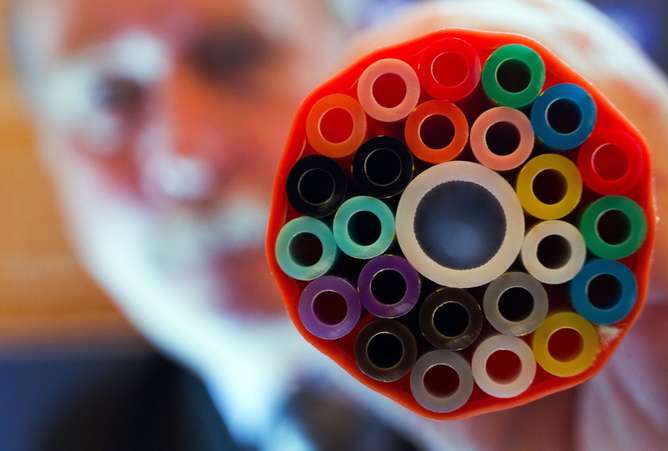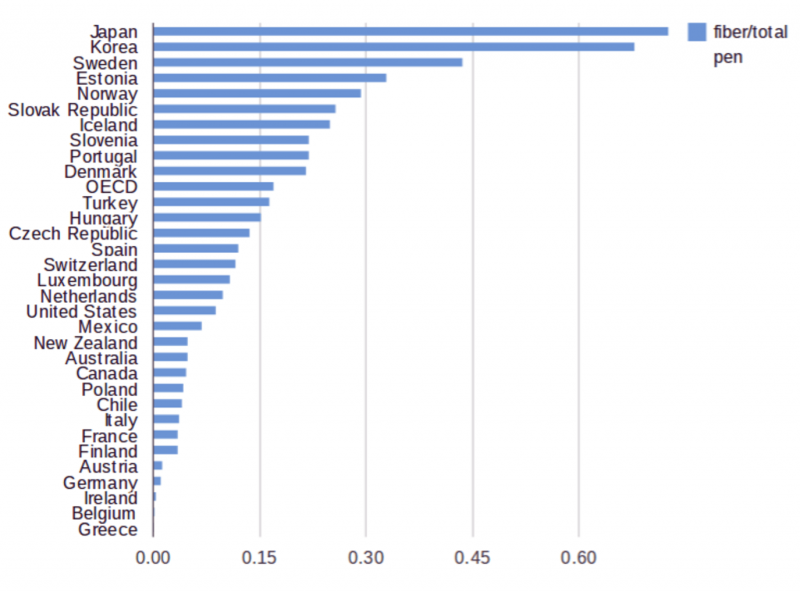A full fibre network is the only way to future-proof Britain

Another day, another government announcement heralding the coming of high-speed broadband for all – in this case the call, by the prime minister, David Cameron, call to that would put broadband on the same footing as the water supply. But such statements are two-a-penny, while the decisions and resources needed to make them a reality are sadly scarce.
The government acknowledges the enormous demand for fast broadband – – but it has adopted the wrong approach to meeting that demand.
If the communications network is to be considered as , as suggested by the and the prime minister, then investment must be considered over the long term. Yet the current strategy only makes sense for the private sector communications industry. Just as the shareholder value of a water company is based on profits from its customers rather than the public health benefit of a fresh water supply, shareholders of communications companies consider only short-term financial return from customers, rather than the national economic return of a truly digital economy.
With 95% of UK homes expected to have 24Mbps by 2017, the updated aim for every home to have 10Mbps (megabits per second) broadband by 2020 is a welcome increase from the . But this is orders of magnitude behind what's available: more than half of Japanese and South Korean homes are connected to a fibre service faster than 1Gbps (gigbits per second) – and countries as diverse as Estonia, Turkey and Denmark are investing in fibre services .
Contrast this with UK telecoms regulator Ofcom's definition of high-speed (or "superfast") broadband as , while the OECD specifies anything below 50Mbps as "mid speed". We are aiming far too low. Transformative changes to people's lives through new digital services in personalised medicine, education and communication are most likely to be pioneered in those societies with the widest roll-out of high-speed broadband – already more than 1,000 times higher than UK recommendations.
Don't believe the advertising
There have been about how broadband products are advertised, using the weaselly expression "up to" a certain speed to hide an enormous range of service quality. The same applies to the use of "fibre service".

The is where the entire circuit from network backbone through the local exchange to a customer's property is via fibre-optic cable (known as fibre-to-the-home or fibre-to-the-premises). This is the fastest available. But in Britain, the broadband roll-out carried out by Openreach under the government's provides fibre-optic connections only to the telephone street cabinets (fibre-to-the-cabinet). This means that the "last mile" connection to the customer's house – which may be far more than a mile – is through copper telephone cable, resulting in a dramatic drop in speed.
The same applies to Virgin Media advertising broadband via its cable television network as "fibre". BT's , a mix of fibre-optic and copper cable that promises speeds "up-to" 1Gbps, is still a fibre-to-the-cabinet solution. That means a costly, lengthy cabinet upgrade process that will ultimately still only provide a strongly distance-dependant service: those far from the exchange and poorly served before will be poorly served after.
Calling these a "fibre service" hides the fact that they are at best a stop-gap measure, the costs of which would, in the long term, be better spent on building a nationwide, high–capacity fibre-optic infrastructure that will stand the UK well into the future. True fibre-to-the-home could be deployed today with a starting speed of 1Gbps and seamless upgrades to higher capacities – and would deliver the advertised speed regardless of distance from the exchange. This would allow real-time streaming of uncompressed, broadcast-quality 4k television – but, more importantly, it would fundamentally change the way we do things online. Sweden has the third largest penetration of fibre in the world at 40%; the UK's fibre-to-the-cabinet does not even make the chart.
Of course, the initial installation cost is higher and depends on the exact solution used. But the overall cost of a complete fibre-to-the-home network, ignoring any existing infrastructure, is still less than half the cost of HS2, and would provide significant cost savings in the long run. Recent suggest this would be a considerably more popular investment than HS2 – and arguably it would provide a more significant return on investment to a much greater number of people.
Pushing the frontiers
Fibre is the future – and the research programme based at UCL and Aston University is working alongside many industrial partners to push the limits of current technology. This year UNLOC has demonstrated record transmission distances of four terabits per second over 2,000km using a novel all-optical signal processing technique.
In May UNLOC was joint organiser of a discussion meeting at the Royal Society entitled , highlighting the growing concern among academics and industry that broadband demand will outstrip network capacity. This applies for wired telecoms but even more so for mobile phone networks. The government must take all possible steps to encourage the best use of new technologies and high-capacity fibre-to-the-home.
This will require leadership, but not necessarily significant funding. For example, planning rules could be updated so that newly built homes and premises must come with a fibre-optic connection installed, government subsidised installations should be fibre-to-the-home, broadband speed targets redefined to exceed the OECD definition and advertising should properly acknowledge the benefits of true fibre-to-the-home products. This is possible: the London Borough of Wandsworth administration recently , while .
In the US, communities and municipalities failed by their telecoms providers have and installed their own fibre networks. The government should support those wishing to to so in the UK by requiring that telecoms firms offer a collective fibre-on-demand product. There's also a place for a discussion around granting network providers a share in the profits of firms whose paid-for content is delivered over their networks – providing an incentive for further investment.
A national fibre-to-the-home network would offer significant long-term return, and can be achieved with a range of light-touch regulations, policies and guidance, or via a major national infrastructure program. Both courses would propel the UK to the forefront of the global digital economy, where it needs to be.
Source: The Conversation
This story is published courtesy of (under Creative Commons-Attribution/No derivatives).
![]()




















